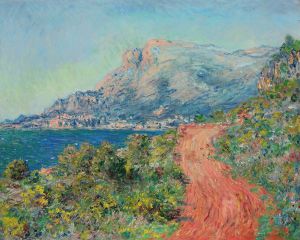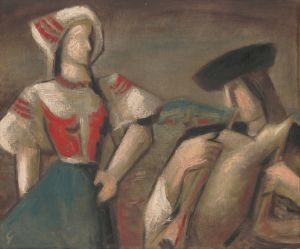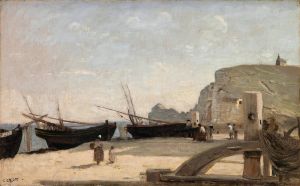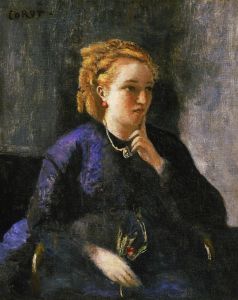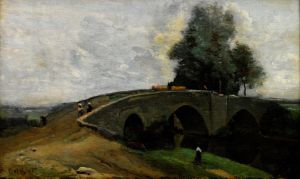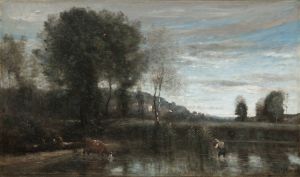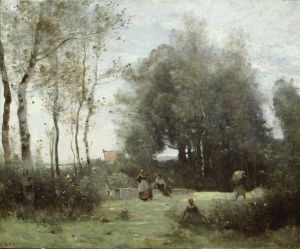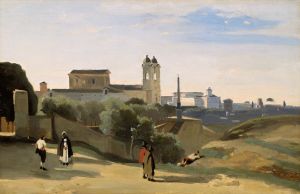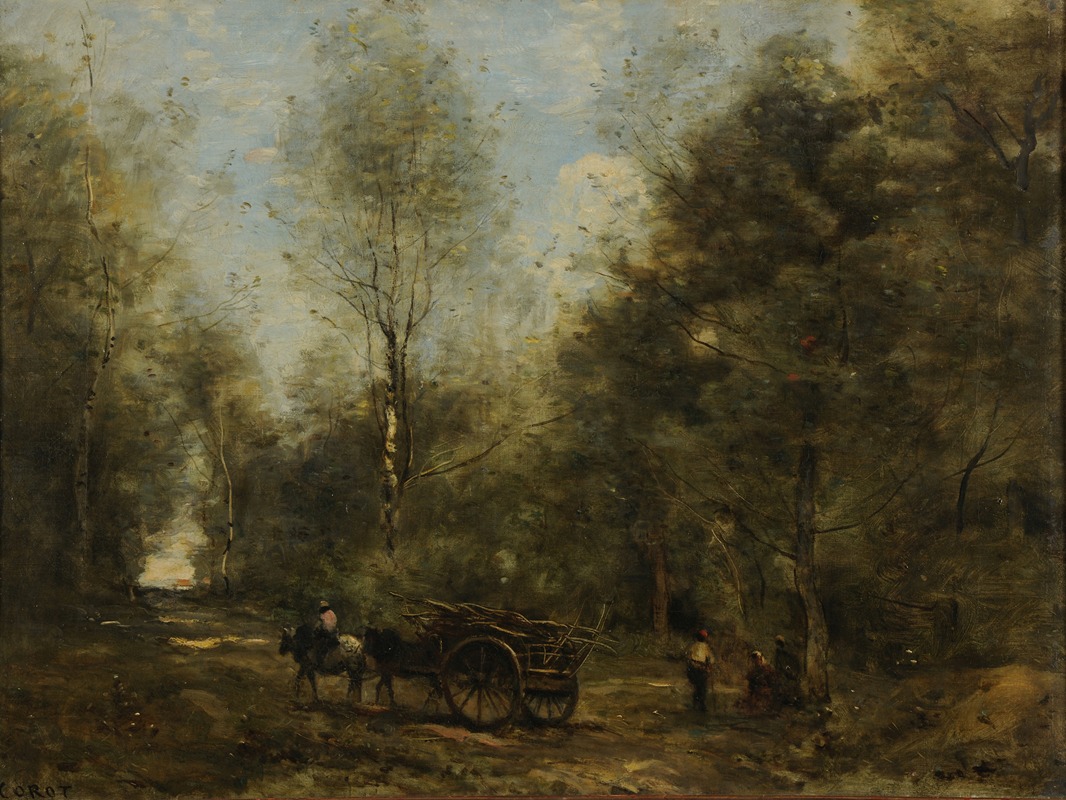
Une allée dans les bois de Wagnonville
A hand-painted replica of Jean-Baptiste-Camille Corot’s masterpiece Une allée dans les bois de Wagnonville, meticulously crafted by professional artists to capture the true essence of the original. Each piece is created with museum-quality canvas and rare mineral pigments, carefully painted by experienced artists with delicate brushstrokes and rich, layered colors to perfectly recreate the texture of the original artwork. Unlike machine-printed reproductions, this hand-painted version brings the painting to life, infused with the artist’s emotions and skill in every stroke. Whether for personal collection or home decoration, it instantly elevates the artistic atmosphere of any space.
Jean-Baptiste-Camille Corot, a pivotal figure in the landscape painting genre, created "Une allée dans les bois de Wagnonville" during the 19th century. Corot, born in Paris in 1796, was a leading artist of the Barbizon School, a movement that emphasized naturalism and paved the way for Impressionism. His work is renowned for its delicate portrayal of light and atmosphere, capturing the serene beauty of the natural world.
"Une allée dans les bois de Wagnonville" exemplifies Corot's mastery in depicting tranquil woodland scenes. The painting features a path through a dense forest, likely inspired by the woods near Wagnonville, a location that Corot visited and painted. The composition is characterized by its soft, diffused light filtering through the trees, creating a peaceful and contemplative atmosphere. This effect is achieved through Corot's use of a muted color palette and his skillful handling of tonal variations, which lend the scene a sense of depth and realism.
Corot's technique often involved painting en plein air, or outdoors, which allowed him to observe and capture the nuances of natural light and shadow directly from the environment. This approach was somewhat innovative for his time and influenced many later artists, including the Impressionists. In "Une allée dans les bois de Wagnonville," Corot's attention to detail and his ability to convey the subtleties of nature are evident. The trees are rendered with a delicate touch, their leaves and branches forming intricate patterns against the sky.
The painting reflects Corot's interest in the interplay between light and landscape, a theme that recurs throughout his oeuvre. His landscapes often evoke a sense of calm and introspection, inviting viewers to immerse themselves in the depicted scene. "Une allée dans les bois de Wagnonville" is no exception, as it draws the viewer into the quietude of the forest path, encouraging a moment of reflection and appreciation for the natural world.
Corot's influence extends beyond his technical prowess; he was also a mentor to many younger artists. His work bridged the gap between the classical landscape tradition and the emerging modernist movements of the late 19th century. By focusing on the transient effects of light and atmosphere, Corot laid the groundwork for the Impressionists, who would further explore these themes in their work.
"Une allée dans les bois de Wagnonville" is a testament to Corot's enduring legacy as a landscape painter. It captures the essence of his artistic vision, which sought to portray the beauty and tranquility of nature with sensitivity and precision. Today, Corot's paintings are celebrated for their contribution to the development of modern art, and his works continue to be studied and admired for their innovative approach to landscape painting.
In summary, "Une allée dans les bois de Wagnonville" by Jean-Baptiste-Camille Corot is a quintessential example of his ability to capture the serene beauty of the natural world. Through his masterful use of light and composition, Corot invites viewers to experience the quiet majesty of the forest, reflecting his profound appreciation for nature and his significant influence on the trajectory of landscape painting.






